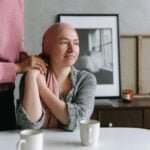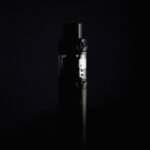Lung Cancer Treatment is evolving as new drugs are being discovered. The treatment depends on whether a person has a small cell or non-small cell cancer and what stage is the cancer.
In addition, individuals who opt to get enrolled in clinical trials may receive novel biologics for lung cancer.
Except for Atezolizumab (Tecentriq), other biologics are yet to be approved for the treatment of lung cancer.

Introduction to Lung Cancer Treatment:
Since every type of lung cancer and the issues connected with the person affected by said illness differ from person to person, there is no one optimum treatment option available for lung cancer.
As a result, the available options for therapy might also vary. The top choices, however, are those that are listed below. It could be difficult to select the best course of treatment for you. You will have the final say regardless of the suggestions from your cancer team.
Surgical procedures, radiation, chemotherapy, and immunotherapy are the most often used forms of treatment. You might get a mix of these therapies, depending on the type and stage of your cancer.
Whether you have small-cell lung cancer or non-small-cell lung cancer will affect the recommended course of treatment.

In Case You Have Small Cell Lung Cancer:
Small-cell lung cancer is commonly treated with chemotherapy, either alone or in combination with radiotherapy or immunotherapy. It can also lengthen life and alleviate symptoms.
Due to the fact that SCLC has already progressed to other parts of the body by the time it is discovered, surgery is typically not employed as a type of treatment for the disease.
Surgery is a possible therapeutic option for SCLC that has been detected early. However, the likelihood of recurrence is significant, necessitating the administration of chemotherapy or radiotherapy to lower the dangers.
In Case You Have Non-Small Cell Cancer:
If you only have one lung affected by non-small-cell lung cancer and your overall health is good, you’ll likely undergo surgery to remove the malignant cells. A round of chemotherapy may come next to eradicate any cancer cells that might have persisted in your body.
Chemotherapy and/or immunotherapy are typically advised if cancer has gone too far for surgery or radiotherapy to be successful. After receiving chemotherapy, if cancer returns, a different course of treatment might be suggested.
If cancer has not progressed far but surgery is not an option (for instance, because your overall health makes complications more likely), you can be given the option of radiotherapy to kill the diseased cells. This may occasionally be used with chemotherapy (known as chemoradiotherapy).

Radiotherapy for Lung Cancer:
To kill cancer cells, radiotherapy uses brief radiation pulses. Lung cancer can be treated in a variety of ways with it.
Small-cell lung cancer is occasionally treated with prophylactic cranial irradiation (PCI), a form of radiotherapy.
PCI involves administering a small amount of radiation to the entire brain. Because there is a chance that small-cell lung cancer can move to your brain, it is used as a prophylactic strategy.
When a cure for cancer is not possible, radiotherapy can also be used to manage the disease’s symptoms, such as pain and bloody coughing, as well as to halt its development (this is known as palliative radiotherapy).
If you cannot undergo surgery for your non-small-cell lung cancer, you may undergo a rigorous course of radiotherapy known as radical radiotherapy.
The use of stereotactic radiation, a unique form of radiotherapy, may be substituted for surgery in cases with very small tumors.

Side Effects of Radiotherapy:
These side effects usually subside after the completion of the treatment process.
- Weariness and chest pain (tiredness)
- Prolonged cough that may produce phlegm tinged with blood (this is normal and nothing to worry about)
- Having trouble swallowing (dysphagia)
- Hair loss on your chest
- Skin that is red and sore and feels like it has been sunburned
The course of Treatment:
There are various alternative ways to organize a radiotherapy treatment.
With a weekend respite, radical radiation is typically administered five days per week. The course of radiation typically lasts 4 to 7 weeks, with each session lasting 10 to 15 minutes.
Because a larger radiation dose is administered during each treatment with stereotactic radiotherapy, fewer treatment sessions are necessary. Typically, stereotactic radiotherapy patients receive 3 to 10 treatments.
One to five treatments are typically needed for palliative radiation.
Patients receiving conventional radical radiation should expect to receive 20 to 32 sessions of treatment.
An alternate method of administering radical radiotherapy is continuous hyperfractionated accelerated radiotherapy (CHART). For a period of 12 days, CHART is administered three times every day.

How Is Radiotherapy Done?
A little tube (catheter) is introduced into your lung during internal radiation. A tiny bit of radioactive material is inserted into the catheter, applied to the tumor for a short period of time, and then taken out.
Radiation beams are directed at the areas of your body that are affected by conventional external beam radiotherapy.
Stereotactic radiotherapy is a more precise form of external beam radiotherapy in which a number of high-energy beams provide a greater dosage of radiation to the tumor while minimizing radiation exposure to nearby healthy tissue.
Immunotherapy for Lung Cancer:
A class of medications known as immunotherapy stimulates your immune system to hunt down and destroy cancer cells. It may be coupled with chemotherapy or administered alone.
Pembrolizumab and Atezolizumab are two immunotherapy medications used to treat lung cancer.

Side Effects:
Immunotherapy can be used for up to two years if the side effects are manageable and the treatment is effective.
Immunotherapy frequently causes adverse reactions like:
- Experiencing fatigue or weakness, feeling ill, and having diarrhea
- Appetite loss discomfort in your muscles or joints
- Shortness of breath skin modifications, such as dryness or itchiness
How It Is Done?
Immunotherapy may be administered using a plastic tube inserted into:
- A significant vein in your chest (central line)
- Your arm’s vein (cannula)
You might require a dose every two to four weeks, and it takes between 30 and 60 minutes to administer.
Surgery for lung cancer:
Lung cancer surgery can take one of three forms:
- A little portion of the lung is removed during a segmentectomy or wedge resection. Only a limited percentage of people are good candidates for this surgery. It is only applied if your medical professionals believe your lung cancer is localized to a single region and is small. Most frequently, this is extremely early-stage non-small-cell lung cancer.
- The term “lobectomy” refers to the removal of one or more substantial lobes from the lung. If the cancer is limited to a single lung region, your doctors may advise this surgery.
- The removal of the entire lung is known as a pneumonectomy. This is utilized when cancer has spread throughout the lung or is in the center of the lung.
Although it is possible to breathe normally with just one lung, some people may worry about their ability to do so if one or more of their lungs are removed.
However, it’s likely that you may continue to experience breathing issues following surgery if you had them prior to the procedure.

How It Is Done?
Surgery often involves making an incision in the side or chest and then removing all or part of the diseased lung. If nearby lymph nodes are suspected of having cancer, they may also need to be removed.
An alternative to this method known as video-assisted thoracoscopic surgery (VATS) may be appropriate in some circumstances.
Small incisions are made in the chest during a procedure known as VATS, a sort of keyhole surgery.
As the surgeon removes the problematic lung part, a tiny camera is placed into one of the incisions so they may view the inside of your chest on a monitor.
Tests Performed Prior to Surgery:
You must have a few tests to determine your general health and lung function prior to surgery. These may consist of:
- Electrodes are used in an electrocardiogram (ECG) to record the electrical activity of your heart.
- In a test for lung function known as spirometry, you will inhale into a device that will evaluate how much air your lungs can take in and out.
- A fitness test

Complications or Side Effects:
Lung surgery has a risk of complications, just like any other type of surgery. An estimated 1 in 5 lung cancer procedures will experience problems [Ref].
Most of the time, these issues can be resolved with medication or more surgery, which could extend your hospital stay.
Following lung surgery, complications could occur:
- Lung inflammatory disease or illness (pneumonia)
- Too much bleeding
- Deep vein thrombosis is a blood clot that may progress to the lung and originate in the leg (pulmonary embolism)
Chemotherapy for Lung Cancer:
Chemotherapy treats cancer by administering potent drugs that can destroy the disease. Chemotherapy has a variety of applications in the management of lung cancer. It might be, for instance:
- Given prior to surgery to reduce a tumor, which can improve the likelihood that the procedure will be successful (this is usually only done as part of a clinical trial).
- In addition to radiation.
- Chemotherapy is administered following surgery to stop cancer from coming back.
- Used to treat cancer when a cure is not possible and to stop the spread of the disease.
Side Effects of chemotherapy:
Chemotherapy side effects may consist of:
- Loss of Hair
- Tiredness and Fatigue
- Mouth Ulcers
- Being ill
You may be able to take other medications to relieve these side effects while receiving chemotherapy, or they should progressively go away after the course of treatment is complete.
In addition to weakening your immune system, chemotherapy can also increase your susceptibility to infection.
As soon as you notice any infection-related symptoms, such as a fever, or if you suddenly feel sick overall, consult your physician immediately.

How Is It Done?
Cycles of treatment are frequently used in chemotherapy. A cycle is taking chemotherapy medication for a few days, followed by a break for a few weeks to allow the therapy to take effect and your body to recover from its side effects.
The type and grade of lung cancer will determine how many rounds you require.
Most patients require 4 to 6 treatment cycles spread out over 3 to 6 months. Following the completion of these cycles, you will visit your doctor. You might not require further therapy if your cancer has improved.
If cancer does not get better after these rounds, your doctor will inform you if you need a different type of chemotherapy. You could also need maintenance chemotherapy to keep cancer under control.
Lung cancer chemotherapy entails taking a variety of medications. The medications are typically administered intravenously (via a drip into a vein) or through a tube attached to a blood artery in your chest. Some patients might receive tablets or capsules to swallow instead.
Your doctor may recommend vitamins or administer a vitamin injection before you begin chemotherapy. These aid in minimizing some of the negative consequences.

Targetted Therapies for Lung cancer:
Drugs that particularly target these modifications have been created as scientists have learned more about the alterations that non-small cell lung cancer (NSCLC) cells undergo to aid in their growth.
When compared to normal chemotherapy (chemo) medications, targeted drugs operate differently. They frequently have different adverse effects and occasionally are more effective than chemo medicines.
At this moment, either alone or in combination with chemotherapy, targeted medicines are most frequently utilized to treat advanced lung malignancies.
Currently, there are targeted medicines that have received FDA approval for lung cancer tumors exhibiting anomalies in [Ref]
- ROS-1
- MET
- RET
- BRAF V600E
- EGFR
- ALK
- NTRK
Conventional chemotherapy, immunotherapy, or a combination of the two may be recommended if you get a targeted therapy that has been approved but still test negative for a biomarker.
Additionally, radiation or surgery might be advised. A clinical trial looking at remedies for a number of additional markers may also be relevant.




